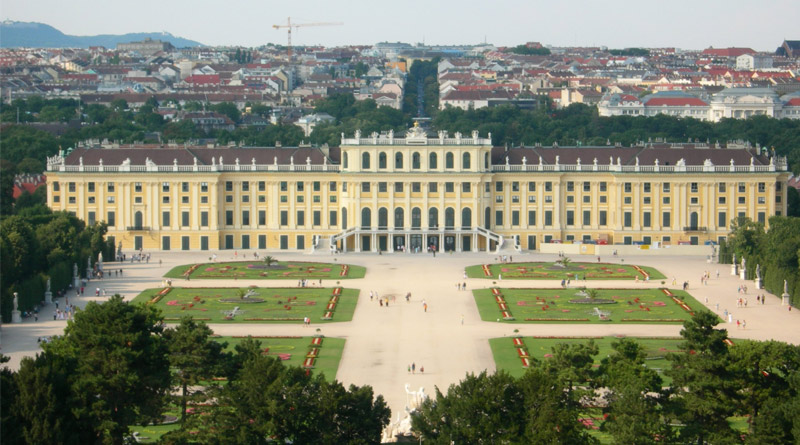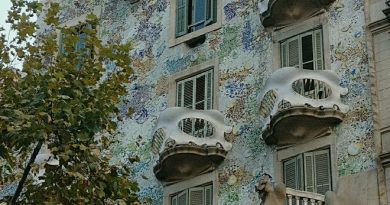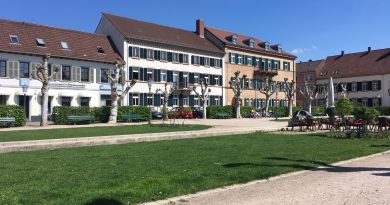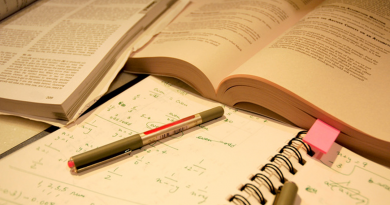LingoMap: Vienna, dialects, and the not quite blue Danube.
Servus und Grüße aus Wien!
I’m Harry and I’m taking part in the Erasmus exchange program and for the past few months I’ve been studying in Vienna as the 3rd year of my History and German degree at Swansea University. Whilst I’ve only been in Austria a few months, the little country that I knew so little about before I arrived has very much grown on me and the opportunity to study abroad has been incredibly rewarding. At first it was quite daunting being plunged into a new city in a foreign language and for a while even just shopping in a supermarket seemed like a challenge, but a few months later I think I’ve started to get the hang of it all and my German has really improved so much since I first arrived.
But first about the city itself, for hundreds of years Vienna was the capital of a huge European empire and whilst nowadays it’s only the capital of a country of around 8.5 million people I very much enjoy discovering the cities history. I’m very fortunate to live only a short walk from the magnificent Schloss Schönbrunn and it’s huge gardens open to the public all year round and whilst it’s very beautiful to wander through in the summer I was very lucky recently to get to see it covered in snow and ice. I was always told by my friends that it’s unlikely to snow in the city itself and that I would have to go to the mountains to see it, so it was very nice to see.
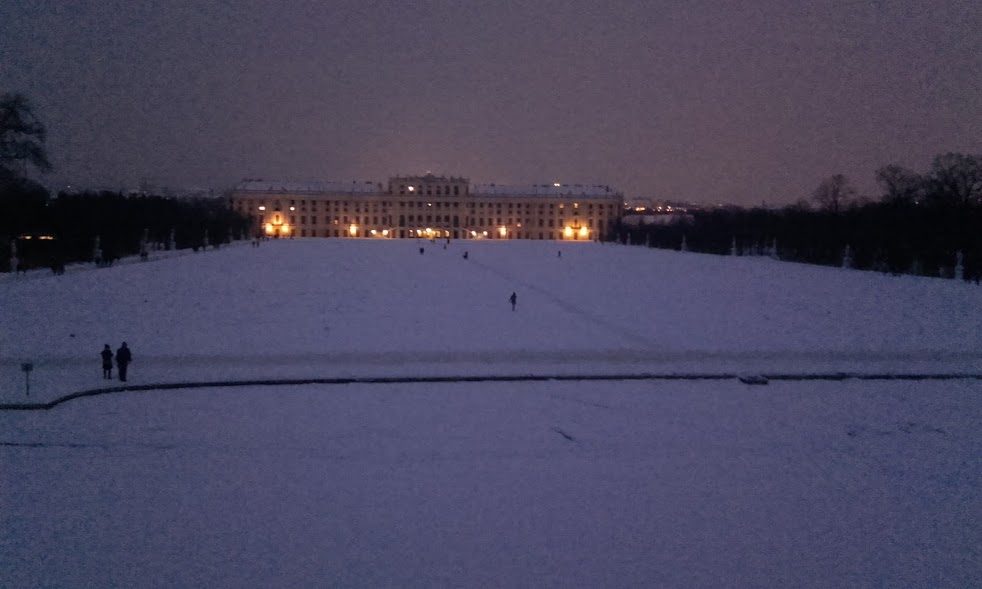
Some of the historic buildings in Vienna are really exceptional. On my way to university everyday I get to walk along a particularly lovely section of the Ringstrasse, a huge street that circles the cities historic center, and see the Austrian Parliament, the old imperial palace the Hofburg and the massive Wiener Rathaus, the cities town hall which hosts everything from films festivals to Christmas markets. On my first day in Vienna in September I met some friends by the Rathaus for what they described as a ‘street parade.’ It turned out to be a massive parade held once a year that tours all day around the Ringstrasse with huge floats carrying DJs and speaker systems blaring out music for everyone to enjoy as they roam around the city. The parade drove around all day and even passed by the Staatsoper, Vienna’s most ornate opera house which is probably more familiar with Mozart or Strauss than Avicii or Justin Bieber. I tried pointing this out to my friends in German but I couldn’t quite find the words.
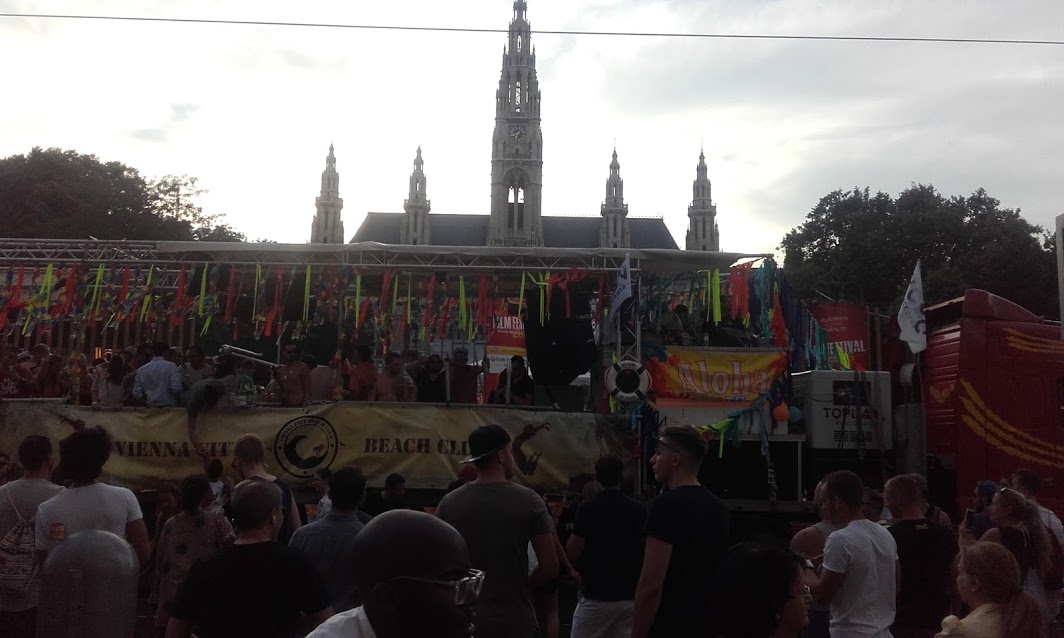
In regards to words though nothing really prepared me for some of the accents or dialects I’ve heard in my time in Austria. I’d learned at university before coming here that in different parts of Germany there are different ways to greet each other, like Moin Moin in the north or Servus in the south. But although Austria is a relatively small country they’ve managed to develope different dialects and accents for each and every region. For example a simple Servus in Vienna may well become Servas and if a Wiener wants to say something is really good or sehr schön they may say that it’s urschön or even urleiwand where the ‘ur’ attached to the start of a word means the same as saying sehr. And that’s just in Vienna! Someone from Carinthia in southern Austria might replace what would normally be an ‘a’ sound in a word with an ‘o,’ so Katzen which just means cats sometimes becomes Kotzen, which funnily enough is also the German word for vomit. A Beisl is a type of Viennese pub or restaurant, Öffis refers to the public transport, everyone says Grüß Gott when they walk into a shop and you may well hear Baba in Vienna as you leave one. Someone from Voralberg or Tirol might insist their language has more in common with Swiss German than Austrian and everybody agrees that nobody can understand the Viennese. So of course I struggle from time to time.
Another aspect of Vienna I’ve found peculiar but one which I do very much enjoy, maybe too much, are the Würstelstände you can find pretty much anywhere in the city. A Würstelstand is a kiosk that serves food, drink but most importantly of all Würste. Not only will they typical sell multiple different types of sausage, but you can also specify how you want it cooked and how you’d like it served. For example you might like to try a Käsekrainer, a sausage with cheese inside pushed into the the middle of a baguette and served usually mit Ketchup und Semf. You may also want to ask for a Debreziner, a long spicy sausage served with mustard and a Semmel, a little bread role. To go with that you might order an Ottakringer, a beer brewed in Vienna’s Ottakring district, or a Stiegl from Salzburg. Usually a Würstelstand will be open until the early hours and be very well lit so for anyone travelling through the city at night they are a common sight. Shops and supermarkets tend to close a lot earlier in Austria than the UK and they’ve definitely saved me a few times from going hungry to say the least!
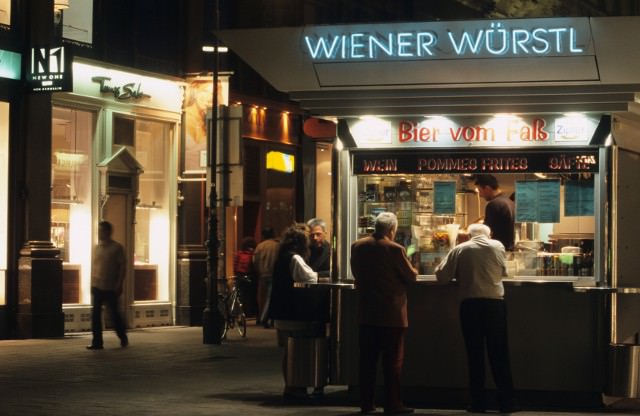
Vienna as a city is also very well located to visit lots of other major European cities and capitals and I intend to make to the most of it throughout my year here. By train it’s just over an hour to get to the Czech Republic and it’s even quicker to get to Bratislava, the capital of Slovakia. Vienna happens also to have the Danube river flowing through it, the river starts in Germany and flows into Austria and onto Slovakia and Hungary and eventually all the way to the Black Sea, and it’s actually possible to get a boat trip all the way to Budapest, which is definitely a more scenic journey than the train. Although after having swam in the Danube, I can say for sure that it wasn’t quite as blue as I was led to believe!

